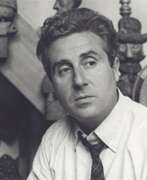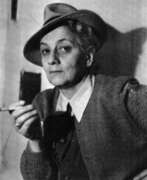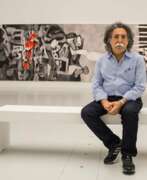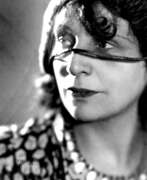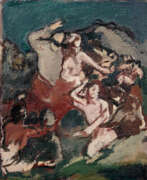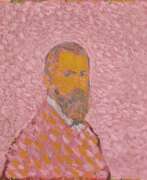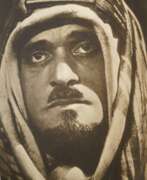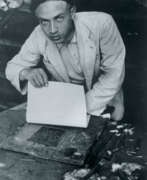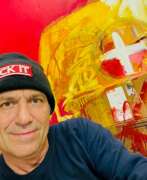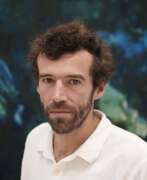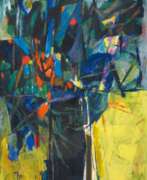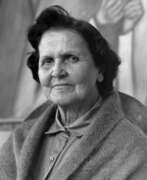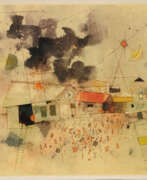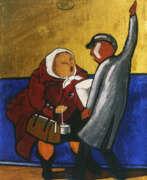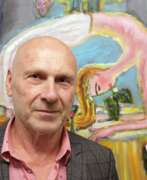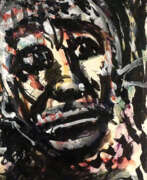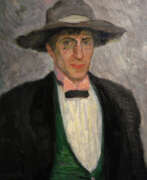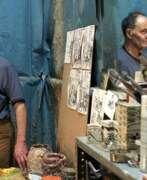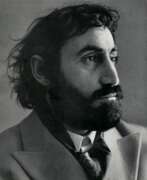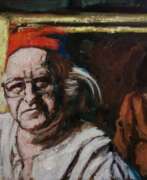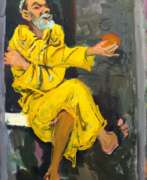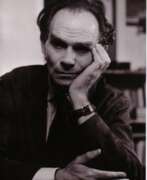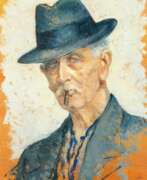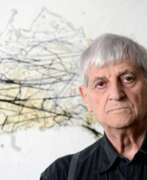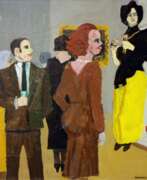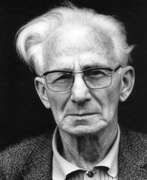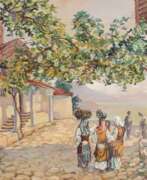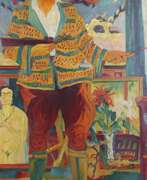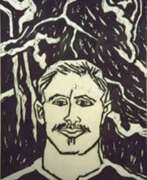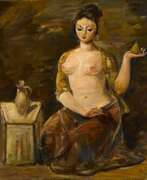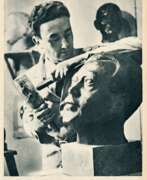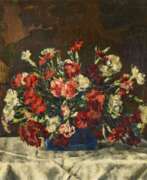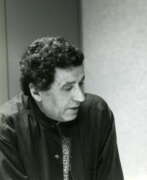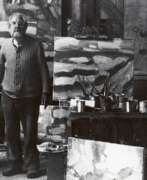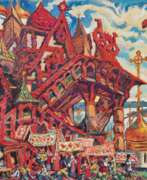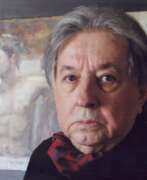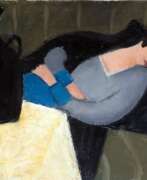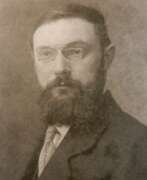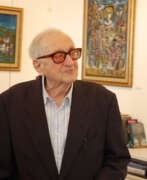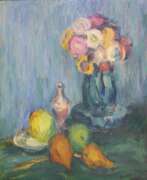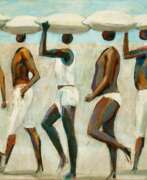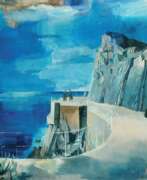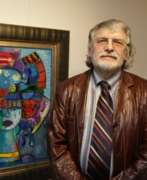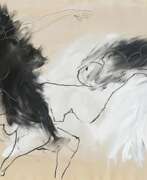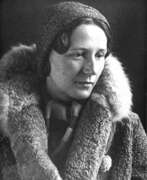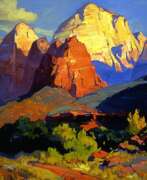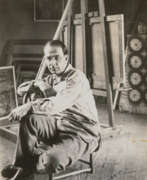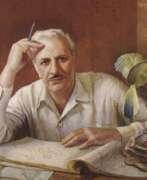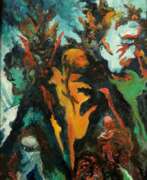Expressionism
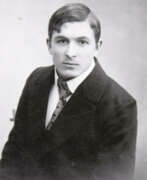

Wäinö Waldemar Aaltonen was a Finnish artist and sculptor, celebrated for his contributions to the cultural landscape of Finland, particularly during the early years of the nation's independence. Born in 1894, Aaltonen's works are distinguished by their nationalist themes and monumental scale, often reflecting the spirit and identity of Finland. His artistic journey was notably influenced by a trip to Italy in 1923, where he encountered cubist and futurist art, elements of which he integrated into his own work.
Aaltonen's sculptures are key features in Finland's public spaces, including the well-known statues in the House of Parliament and numerous works in Turku, such as the "Lily of Turku" and a statue of the runner Paavo Nurmi. His mastery is also showcased at the Wäinö Aaltonen Museum of Art in Turku, which houses a significant collection of his sculptures, paintings, and drawings. This museum not only celebrates his legacy but also serves as a central repository for his extensive works, donated by Aaltonen himself.
For those interested in exploring Aaltonen's work and the impact of Finnish sculpture, a visit to the Wäinö Aaltonen Museum of Art is invaluable. The museum provides a comprehensive view of his artistic evolution and contributions to Finnish art. For updates on exhibitions and events related to Wäinö Aaltonen, consider signing up for notifications through the museum's mailing list, ensuring you stay informed about new insights and offerings related to this pivotal artist.


Vilmos Aba-Novák was a distinguished Hungarian artist, celebrated for his unique blend of Expressionism with classical and Renaissance influences. Born in Budapest in 1894, he was deeply influenced by his experiences in the Austro-Hungarian Army during World War I, which later permeated his art. Aba-Novák is best known for his vibrant frescoes and murals that decorate several public buildings in Hungary, including churches and civic buildings in Szeged and Budapest.
His works, characterized by dynamic compositions and a bold use of color, often depicted village fairs, circuses, and everyday Hungarian life, bringing an almost fantastical quality to these scenes. His remarkable ability to combine traditional subjects with modern artistic elements made his work a significant contribution to modern Hungarian art. Aba-Novák's art was not only appreciated in his homeland but also internationally, earning him major awards like the Grand Prize at the Paris World Exhibition in 1937 and at the 1940 Venice Biennale.
For art collectors and enthusiasts interested in exploring or purchasing Vilmos Aba-Novák's works, staying informed about upcoming sales and exhibitions is crucial. Signing up for updates can provide valuable insights into available pieces and auction events. To keep abreast of such opportunities, consider registering for newsletters or alerts specifically tailored to Aba-Novák's art. This will ensure you don't miss out on acquiring a piece of this unique artistic heritage.
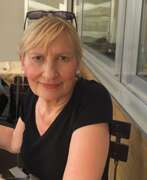

Margitta Abels is a German artist known for her abstract paintings and mixed media works.
Margitta Abels has received numerous awards and honors for her work.
Abels' work is characterized by its use of color and texture to create complex and layered compositions. She often works with a variety of materials including acrylic paint, charcoal, and collage elements, and her work often incorporates textural elements such as sand and fabric.
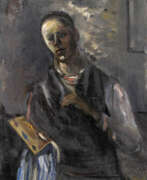

Alfred Aberdam was a Polish painter associated with the School of Paris, known for his participation in the artistic movements of the early 20th century. Born in Lviv, then part of the Austro-Hungarian Empire, Aberdam's journey in the arts began with his studies at the Munich Academy in 1911. His life and work were marked by significant historical events, including imprisonment during World War I and an active period in Poland's art scene before settling in Paris. Aberdam's contributions are remembered through his numerous exhibitions, including solo showcases in Paris, London, and Tel-Aviv, as well as posthumous retrospectives like the one in Geneva's Petit Palais in 1970.
Aberdam's works reflect the cultural dynamism of the School of Paris, capturing a confluence of influences that characterized the European art scene. Despite being somewhat lesser-known, his paintings have been traded at auction, reflecting a continued interest and recognition of his artistic legacy. His art remains an important part of the narrative of Jewish painters in Paris from 1905 to 1939, contributing to our understanding of the era's artistic diversity.
For collectors and experts in art and antiques, Aberdam's work embodies the intricate history and cultural exchanges of the early 20th century European art world. His paintings not only represent his individual talent but also tell the story of the times in which he lived, worked, and created. Understanding Aberdam's art is a journey through the cultural melting pot that was Paris during a pivotal period in modern art history.
For those interested in exploring the legacy and works of Alfred Aberdam further, or seeking to keep abreast of new product sales and auction events related to his work, subscribing for updates is invaluable. Stay informed on the latest developments and opportunities to appreciate or acquire pieces by this notable artist. Subscribe now to ensure you are alerted to new sales and auction events featuring the esteemed Alfred Aberdam.


Abdoulaye Diarrassouba, also known as Aboudia, is an American-Ivorian contemporary artist.
Aboudia began his artistic career early and has drawn attention for his expressive and emotional style. His work reflects the complex realities of the city and the experiences of locals during political and social crises. The painter often uses bright colours, rough strokes and abstract shapes to convey the violence, chaos and hope that are present in his subjects' lives.
Aboudia's artistic style mixes elements of graffiti, street art, African folk painting and contemporary art.
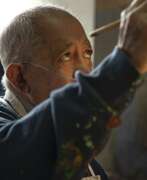

Gilberto Aceves Navarro was a Mexican painter and sculptor and a professor at the Escuela Nacional de Artes Plásticas and Academy of San Carlos. There have been more than two hundred individual exhibits of his work, with his murals found in Mexico, Japan and the United States. He received numerous awards for his work including grants as a Creador Artístico of the Sistema Nacional de Creadores de Arte, Premio Nacional de Ciencias y Artes and Bellas Artes Medal from the Instituto Nacional de Bellas Artes.
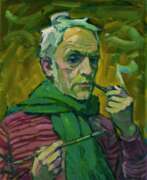

Heinrich Emil Adametz was a German expressionist painter.
Adametz studied in Hamburg and at the Academy of Fine Arts in Stuttgart. Influenced by Expressionism, he painted portraits, seascapes with ships, and still lifes. Later, the events of World War II took such a heavy toll on the artist's family that he was unable to recover from them for the rest of his life.
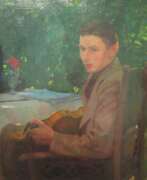

Friedrich Ahlers-Hestermann was a German painter and art writer from Hamburg. He was a member of the Hamburgische Künstlerclub of 1897, as well as of the Hamburg artist's workshop of 1832 and pupil of the Académie Matisse in Paris. After the First World War, he was a co-founder of the Hamburg Secession.
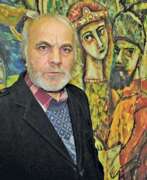

Vladimir Ivanovich Akulov (Russian: Владимир Иванович Акулов) is a Soviet and contemporary Belarusian artist. He is known as a painter, graphic artist and teacher, a representative of the second wave of Belarusian avant-garde.
Vladimir Akulov in his work has developed a unique style under the influence of expressionism, cubism, primitivism, fauvism. He is a master of portrait, landscape, still life, compositions with symbolic and allegorical subjects, illustrations of literary works. During his career the artist created several cycles of portraits, including those of famous people.
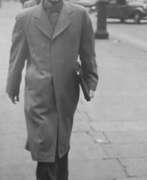

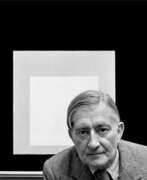

Josef Albers was a German-born artist and educator. The first living artist to be given a solo shows at MoMA and at the Metropolitan Museum of Art in New York, he taught at the Bauhaus and Black Mountain College, headed Yale University's department of design, and is considered one of the most influential teachers of the visual arts in the twentieth century.
As an artist, Albers worked in several disciplines, including photography, typography, murals and printmaking. He is best known for his work as an abstract painter and a theorist. His book Interaction of Color was published in 1963.
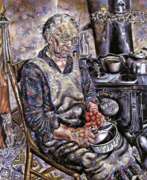

Ivan Albright was an American artist, celebrated for his Magic Realism style that presented an exaggerated and abnormal viewpoint on the mundane. Albright's work is recognized for its meticulous detail and dark, mysterious themes, often exploring the human condition and the passage of time. His technique, involving painstakingly detailed brushwork, sometimes with brushes of a single hair, made his paintings unique and highly valued.
His early and mid-career, from 1925 to 1950, saw the emergence of his mature style, characterized by a baroque formal approach and an uncompromising disclosure of the human condition. This period in his career was marked by controversy and innovation, as seen in works like "The Lineman," which, despite criticism from the public for its portrayal of a lineman as inaccurate and depressing, was more successful with art critics.
Ivan Albright's later career, from 1950 to 1983, focused more on portraiture and self-portraits, reflecting a move away from larger-scale works. His life was filled with travel and personal developments, including marrying Josephine Medill Patterson Reeve in 1946 and settling in Chicago, where he produced numerous sketches and drawings from his travels around the world.
The legacy of Ivan Albright is significant; his detailed portraits and still lifes are unparalleled, recognized for their extraordinary attention to detail and stark lighting. He became known as a one-of-a-kind artist, synthesizing his formal training with experiences from his time as a medical orderly during WWI. His work, including notable pieces like "The Picture of Dorian Gray" and "Into the World There Came a Soul Called Ida," can be found in prestigious collections, including the Art Institute of Chicago, which holds a substantial number of his works.
For collectors and experts in art and antiques interested in the unique and captivating world of Ivan Albright's art, his work offers a deep dive into the complexities of human existence and the fleeting nature of life. To stay updated on sales and auction events related to Ivan Albright's work, signing up for updates is recommended. This subscription ensures you remain informed about opportunities to acquire pieces by this distinguished artist, whose meticulous attention to detail and exploration of the human condition continue to captivate audiences.
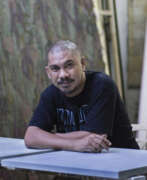

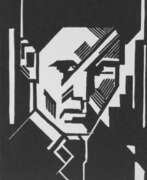

Wobbe Alkema is a Dutch artist, graphic artist, architect, designer and sculptor. He is known for his abstract and geometric works, often combining elements of constructivism and De Stijl.
Alkema was trained as an architect and then turned to art, studying at the Academy of Fine Arts in Groningen. In the 1920s he was involved with the artist collective De Ploeg, which was active in the northern Netherlands and promoted modernist art and culture.
Throughout his career, Alkema continued to explore the principles of abstraction and geometry in his work. His paintings often feature simple geometric shapes such as squares, circles and triangles arranged in complex compositions that suggest movement and depth. He was also interested in the interaction of colour, using bright, bold hues to create dynamic contrasts and harmony.
In addition to painting, Alkema created a number of sculptural works, including abstract reliefs and freestanding sculptures. He also designed furniture and other functional objects, applying his principles of abstraction and geometric form to everyday objects.
Alkema's work is held in the collections of several museums in the Netherlands, including the Groninger Museum and the Amsterdam Stedelijk Museum. He is considered an important figure in the development of abstract art in the Netherlands, and his work continues to be admired for its innovative use of form and colour.
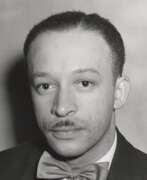

Charles Henry Alston was a mid-twentieth-century American artist. He is known as a graphic and muralist painter as well as a sculptor, illustrator, and educator who lived and worked in New York City's Harlem neighborhood.
Charles Alston was an activist in the so-called "Harlem Renaissance." He became the first African-American director of the U.S. Federal Art Project. The artist created murals for Harlem Hospital as well as a number of cultural and administrative buildings in New York City. Alston is the author of a bust of Martin Luther King, Jr. which was the first depiction of an African American to be displayed at the White House in Washington, DC.
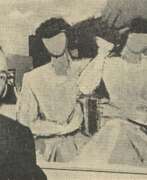

Carl Altena was a German painter. Carl Altena attended the Düsseldorf Art Academy from 1912 and took lessons from Prof. Willy Spatz (1861-1931). In 1914 he was drafted for military service and was taken prisoner in England in 1917. After his release, he settled in Mülheim an der Ruhr in 1919, became self-employed in 1925 and worked as a freelance artist from then on.


Constantine Andreou (Greek Κωνσταντίνος Ανδρέου; Portuguese: Constantine Andreou) is a Greek artist and sculptor of Brazilian origin who had a very successful career for six decades. Many have praised Andreou as an outstanding figure in international art in the 20th century.
Constantin Andreou fought in the Greek army during World War II and joined the armed resistance after the occupation of Greece. After the war ended, Andreou received a scholarship from the French government in 1945 and moved to Paris. There, in 1947, he developed an innovative artistic technique in which he welded brass plates together for the first time. This technique allowed him to find new forms of expression in sculpture and made him an innovator of his time.
During his time in Paris, the artist worked for a time with Le Corbusier. Andreou's works were exhibited alongside those of famous artists such as Pablo Picasso, Henri Matisse and Max Ernst, which testifies to his outstanding artistic achievements.
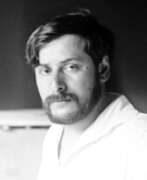

Boris Izraelievich Anisfeld (Russian: Борис Израилевич Анисфельд) was a Russian-American painter, set designer, illustrator, and educator, celebrated for his vivid use of color and imaginative scenery. Born in Bessarabia, Russian Empire, in 1878, Anisfeld's artistic journey led him from the Odessa School of Art to the Imperial Academy of Arts in Saint Petersburg, where he absorbed the influences of prominent artists like Ilya Repin and Igor Grabar. His distinct style caught the attention of Sergei Diaghilev, leading to his work with the Ballet Russe before World War I.
Anisfeld's contributions to art extend beyond his canvas, as his theater designs for Diaghilev's Ballets Russes and collaborations with notable figures like Michel Fokine and Anna Pavlova showcased his ability to blend fantasy with performance. His work with the Ballets Russes, including designing the production of "Sadko" and executing the visions of other celebrated artists for stage sets, marked a significant period in his career before he immigrated to the United States in 1917.
In America, Anisfeld continued his legacy, taking on roles such as a teacher at the Art Institute of Chicago and contributing to the cultural landscape through his stage designs and paintings. His work is recognized for its innovative approach to color and form, bridging the realms of painting and theater design to create immersive, emotionally resonant artworks. Anisfeld passed away in 1973, leaving behind a body of work that continues to inspire and captivate audiences.
For collectors and experts in art and antiques, Anisfeld's work represents a fusion of Russian and American art traditions, enriched by his imaginative approach and vibrant palette. His contributions to the development of modern art and theater design underscore the enduring relevance of his creative vision.
To stay updated on exhibitions, sales, and auctions related to Boris Israelievich Anisfeld, sign up for updates. This subscription will ensure you're informed about new opportunities to explore and acquire works by this influential artist.
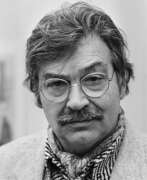

Christiaan Karel Appel was a Dutch painter, sculptor, and poet. He started painting at the age of fourteen and studied at the Rijksakademie in Amsterdam in the 1940s. He was one of the founders of the avant-garde movement CoBrA in 1948. He was also an avid sculptor and has had works featured in MoMA and other museums worldwide.
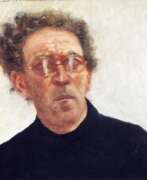

Avigdor Arikha (Hebrew: אביגדור אריכא) was a Romanian-born French–Israeli artist, printmaker and art historian.
Arikha painted directly from the subject in natural light only, using no preliminary drawing, finishing a painting, pastel, print, ink, or drawing in one session. His profound knowledge of art techniques and masterly draughtsmanship enabled him to abide by this principle of immediacy, partly inspired by Chinese brush painting.
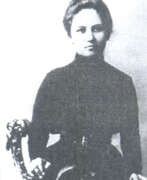

Lydia Ivanovna Arionescu-Baillayre (Russian: Лидия Ивановна Арионеско-Балльер) was an early twentieth-century Russian artist of Moldovan origin. She is known as a painter, a representative of Post-Impressionism and Neo-Impressionism.
Lydia Arionescu-Baillayre created still lifes and portraits. She was a member of the first St. Petersburg society of experimental and innovative artists "Union of Youth".
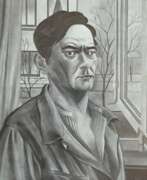

Christian Arnold was a German painter and graphic artist. He is best known for his landscape paintings that often depicted the rural and coastal regions of northern Germany.
Arnold studied at the Academy of Fine Arts in Munich and later taught at the School of Arts and Crafts in Bremen. His work was heavily influenced by the German Expressionist movement, and he often used bold colors and thick brushstrokes to create a sense of emotional intensity in his paintings.
In addition to his landscapes, Arnold also produced numerous portraits, still lifes, and religious works. He worked in a variety of mediums, including oil paints, watercolors, and printmaking.
Arnold's work was exhibited widely during his lifetime, and he received numerous awards and honors for his contributions to the arts. Today, his paintings are held in collections around the world, including the National Gallery in Berlin and the Kunsthalle Bremen.


Valentin Assenov is a Bulgarian painter who lives and works in the picturesque city of Pleven.
He studied painting at the Cyril and Methodius University of Veliko Tarnovo. Assenov's canvases are skillful examples of the combination of vivid color and abstract composition inspired by the traditional Bulgarian landscape. His expressive style of painting shows great boldness in the use of color as well as a distinctive style and skill, and his still lifes are literally bursting with color and good humor. Assenov's paintings are part of the collection of the Bulgarian Ministry of Culture and are also widely represented in private collections in Bulgaria, Germany and Turkey.
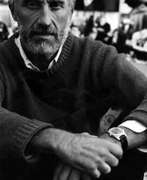

Ugo Attardi was an Italian painter, sculptor and writer. Attardi moved from Genoa to Rome in the early 1950s, where he formed the group Forma 1 together with other artists. His sculpture of Ulysses is now permanently installed in Battery Park in New York
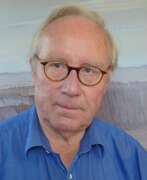

Gerhard Ausborn was a German painter. He studied painting at the Hamburg University of Fine Arts.
Landscapes, ancient sites and modern cities characterise the subject of Gerhard Ausborn's paintings. In parallel, he creates abstract compositions without objects.
The paintings are inspired by impressions the artist gathered during his numerous journeys to many countries around the world. The paintings were not created on location, but always afterwards in his Hamburg studio. They are not intended to be an exact copy of reality, but rather, in memory, what is seen is reduced to the essentials and combined with the artist's own ideas, sensations and experiences.
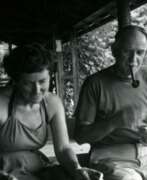

Sally Michel Avery is an American artist known for her paintings in the style of abstract expressionism. Her paintings are often associated with musical rhythm and melody. She began her career as a landscape painter, and in the 1940s she moved to more abstract forms and color schemes.
Avery was one of the few women recognized as influential in American abstract painting in the mid-20th century. Her work can be seen in museums and private collections around the world.
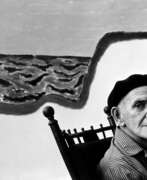

Milton Clark Avery was an American artist who, with his wife, the artist Sally Michelle Avery, created his own "Avery style. Avery was one of the most influential abstract artists in the United States in the mid-20th century.
His work is characterized by bright colors and recognizable geometric shapes. He often used these elements to create abstract compositions in which he placed great emphasis on the harmony of color and line. In addition to abstract works, Avery also created figurative paintings, often depicting landscapes and portraits. He used bright colors and strong contrasts to create emotional depth in his works.
Avery's work is held in many museums, including the Museum of Modern Art in New York, the Guggenheim Museum, and the National Gallery of Art in Washington, DC.
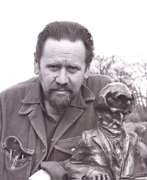

Michael Ayrton was a British artist and writer, renowned as a painter, printmaker, sculptor and designer, and also as a critic, broadcaster and novelist. His varied output of sculptures, illustrations, poems and stories reveals an obsession with flight, myths, mirrors and mazes.


Hans Matthäus Bachmayer was a German expressionist painter and sculptor.
Bachmayer created large-format expressive paintings. His sculptures consist of individual pieces of wood glued together to form bizarrely shaped structures. The expressive colouring of the rough materials created an interesting tension between colour and form.
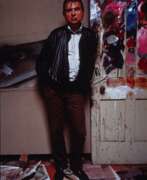

Francis Bacon was an Irish-born British figurative painter known for his raw, unsettling imagery. Focusing on the human form, his subjects included crucifixions, portraits of popes, self-portraits, and portraits of close friends, with abstracted figures sometimes isolated in geometrical structures. Rejecting various classifications of his work, Bacon said he strove to render "the brutality of fact." He built up a reputation as one of the giants of contemporary art with his unique style.
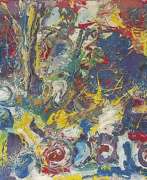

Ernst Rudolf Baerwind was a German painter. Baerwind studied at the art academies in Munich, Berlin and Paris. Baerwind's work was initially based on early German Expressionism. After a surrealist phase, he was influenced in Paris by the painting of the École de Paris and by Informel and then found his way to the International Style.
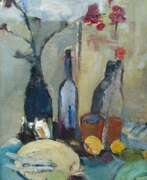

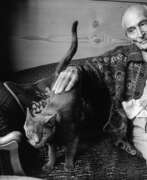

Balthus, a Polish-French artist, was a notable figure in 20th-century art, renowned for his unique approach to painting. Born Balthasar Klossowski de Rola in Paris in 1908, he delved into traditional European painting genres, such as landscapes, still lifes, subject paintings, and portraits. Despite the prevailing avant-garde trends, Balthus's work stood out for its introspective and often controversial portrayal of adolescent girls.
His art, marked by a dreamlike quality and a departure from modernist styles, drew the attention of prominent literary and artistic figures, including André Breton and Pablo Picasso. Balthus's early years were shaped by significant influences, including the poet Rilke, who supported his first publication at the age of 13. Throughout his career, Balthus maintained a distance from the conventional art scene, focusing on a deeply personal and evocative style that continues to captivate art collectors and experts.
Noteworthy works by Balthus reside in esteemed museums and galleries, reflecting his lasting impact on the art world. His paintings, characterized by a blend of realism and surreal undertones, invite viewers into a world of nuanced expression and complex emotion.
For art and antique collectors interested in Balthus's work, staying informed about upcoming sales and auction events is crucial. By signing up for updates, collectors can gain early access to valuable pieces and deepen their engagement with the artist's legacy. This subscription is specifically tailored to alert enthusiasts about new product sales and auction events related to Balthus, ensuring that aficionados don't miss out on valuable opportunities to acquire pieces by this iconic artist.
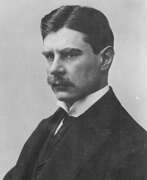

Hans Baluschek, full name Alphons Anton Alexander Hans Ernst Karl Maria Baluschek, was a German painter, graphic artist and writer, representative of the New Materiality style.
Baluschek studied at the Royal Academy of Arts, and in 1900 became a member of the Berlin Secession, a group of artists that also included Ernst Barlach, Max Beckmann, and Wassily Kandinsky. Baluschek was always socially critical, which was reflected in the subjects of his paintings. Many of his paintings are dedicated to the working class of Berlin, he addressed the gray everyday life of Berlin: gray air, gray walls, gray people. Baluschek is often categorized as a German Expressionist because of his emotional style, but his style has something of New Objectivity, Impressionism, and naive painting. He also drew illustrations for the popular children's book Little Peter's Trip to the Moon, and collaborated with periodicals as an illustrator.
World War I instilled patriotic feelings in Baluschek, and he painted a number of subjects on this theme. After the war, he joined the Social Democratic Party and became involved in labor movements. In 1926 he helped establish an artists' relief fund and later became director of the annual Berlin Exhibition. The German Nazis, who came to power in 1933, declared Baluschek a Marxist and a "degenerate artist," suspended him from all positions, and banned him from exhibiting.
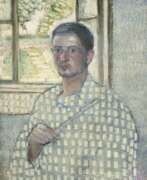

Vladimir Davidovich Baranov-Rossine (Russian: Владимир Давидович Баранов-Россине) was a master of the Russian avant-garde, a prolific painter, sculptor, and inventor, whose work significantly contributed to the Cubo-Futurism movement. Born on January 1, 1888, in Kherson, he was originally named Shulim Wolf Leib Baranov but is best known by his pseudonym, Daniel Rossine. His early artistic education took place in Odessa and then at the St. Petersburg Academy of Arts, laying the groundwork for his future as a revolutionary artist.
In 1910, Baranov-Rossine moved to Paris, a pivotal move that introduced him to the burgeoning European avant-garde scene. It was there, alongside other notable artists such as Marc Chagall, Osip Zadkine, Alexander Archipenko, and Chaim Soutine, that he became an inhabitant of the famous Parisian house "La Ruche." His innovative work, particularly the invention of the Optophonic Piano, which projected colors in sync with music, underscored his commitment to blending art and technology, a hallmark of his career.
Tragically, Baranov-Rossine's life was cut short when he was arrested by the Gestapo in 1943 and subsequently died in Auschwitz in 1944. Despite his untimely death, his legacy lives on through his contributions to modern art and technology. His works can be found in various museums and galleries, celebrated for their vibrant expression and avant-garde techniques that continue to inspire artists and collectors alike.
For those intrigued by Vladimir Davidovich Baranov-Rossine's pioneering work and its lasting impact on the art world, signing up for updates on new product sales and auction events related to this avant-garde master is highly recommended. This ensures enthusiasts and collectors are always informed about the latest opportunities to engage with Baranov-Rossine's remarkable legacy.
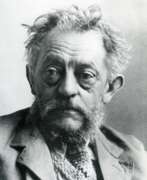

Ernst Heinrich Barlach was a German expressionist sculptor, medallist, printmaker and writer. Although he was a supporter of the war in the years leading to World War I, his participation in the war made him change his position, and he is mostly known for his sculptures protesting against the war. This created many conflicts during the rise of the Nazi Party, when most of his works were confiscated as degenerate art. Stylistically, his literary and artistic work would fall between the categories of twentieth-century Realism and Expressionism.
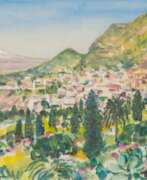

Emil Bartoschek was a German painter and Bauhaus-artist.
Bartoschek's later work turned back to the modern painting and produced a large quantity of impressionistic, abstract, expressionist and surrealist oil paintings, drawings, watercolors, tempera paintings, charcoal, chalk and graphite drawings.
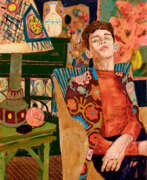

Hernan Bas is an artist based in Detroit, Michigan. He graduated in 1996 from the New World School of the Arts in Miami.
Bas is known for his depictions of waifs and dandies, who are somewhat based on his own experiences, as well as his work with the material SlimFast and the paranormal. Overtime, Bas says, these characters have grown in his paintings and taken on different roles. Bas is gay and queerness often influences his work in the form of waifs and other young men, typically recurrent characters in his work.
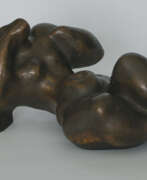

Curt Beckmann is a German painter and sculptor.
He studied at the Düsseldorf State Academy of Art, was a member of the Rhine Secession, Das Junge Rheinland, was a member of the Malkasten Association of Artists, the Association of West German Artists and the Association of German Artists.
Beckmann's work is distinguished by the contemplative quality of the female nude bodies. He gradually moved from naturalistic figures to an almost abstract expressionist representation of them.
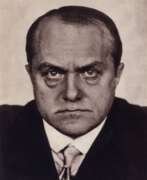

Max Beckmann, a German painter, printmaker, sculptor, and writer, stood out in the early 20th century for his profound contributions to modern art. Beckmann's career spanned a tumultuous period in history, deeply influencing his thematic and stylistic choices. Unlike many of his contemporaries who embraced non-representational painting, Max Beckmann persisted with and evolved the tradition of figurative painting, drawing inspiration from a wide array of artists spanning from Cézanne and Van Gogh to medieval masters like Bosch and Bruegel.
Max Beckmann's experiences, particularly those related to the World Wars, significantly shaped his work. Following Adolf Hitler's rise to power and the subsequent condemnation of modern art as "degenerate," Beckmann fled Germany, spending a decade in self-imposed exile in Amsterdam before eventually relocating to the United States. His art from this period, especially his large triptychs, is considered some of his most potent, offering a stark reflection on humanity and the chaos of the times.
One of Max Beckmann's most personally allegorical works, "Beginning" (1949), encapsulates his knack for blending real and imagined elements from his life to comment on the broader human condition. This piece, alongside others, underscores Beckmann's enduring fascination with the existential struggles modern society faces, teetering between desire and societal roles.
Max Beckmann's legacy is cemented not just by his unique approach to modernism but also by his influence on subsequent generations of artists, particularly in the United States, where he spent his final years teaching and working. Despite a path that often diverged from the mainstream narratives of art history, Beckmann's work continues to resonate, housed in prestigious institutions like The Museum of Modern Art and The Metropolitan Museum of Art in New York.
For collectors and experts in art and antiques, Max Beckmann's oeuvre offers a compelling exploration of 20th-century art and history. To stay informed about new discoveries, sales, and auction events related to Max Beckmann, consider signing up for updates. This subscription ensures access to the latest opportunities to engage with the work of one of modernism's most individual voices.
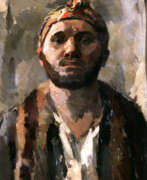

René Beeh was a German painter, graphic artist and draftsman born in Alsace, France.
René Beeh studied at the School of Fine Arts in Strasbourg, then at the Academy of Fine Arts in Munich. In 1910 he traveled to Algeria, resulting in the publication of a collection of letters with many drawings entitled M'Barca. He also illustrated several books and periodicals.
Beeh was a member of the New Munich Secession. The talented artist was highly respected among his contemporaries and was expected to have a great future, but unfortunately his early death interrupted these plans.
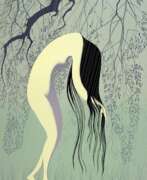

Marcus Behmer, full name Marcus Michael Douglas Behmer, known by the pseudonyms Marcotino und Maurice Besnaux, is a German artist, graphic designer and illustrator.
Marcus was the son of the painter Hermann Behmer, participated in World War I and painted miniature portraits of fellow soldiers. From 1900 he began to collaborate with Munich periodicals and book publishers. Bemer drew hundreds of drawings and illustrations and published a series of engravings that were recognized and successful. He also designed typefaces.
In 1936, Behmer was convicted of homosexuality and spent a year and a half in prison, where the artist also found the strength to draw. During World War II, almost all of Bemer's creations were lost or destroyed.
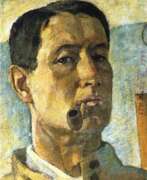

Veniamin Pavlovich Belkin (Russian: Вениамин Павлович Белкин), a distinguished Russian and Soviet artist, was born in 1884 and made significant contributions to the fields of painting, graphic arts, and teaching until his death in 1951. His extensive teaching career included positions at prestigious institutions such as the Higher Institute of Photos and Photo Equipment, the Baron A.L. Stieglitz Central School of Technical Drawing, Vhuteine, the State Architectural Institute, and the Leningrad Institute of Painting, Sculpture, and Architecture named after Ilya Repin. In 1955, a memorial exhibition in Leningrad posthumously honored his artistic legacy.
Belkin's artworks, characterized by their depth and artistic integrity, are held in high regard within major museum collections, including the State Tretyakov Gallery and the State Russian Museum, as well as various regional museums. His contributions to Russian art are celebrated for their historical and cultural significance, bridging the gap between pre-revolutionary and Soviet art.
For collectors and experts in art and antiques, Belkin's work represents an intriguing investment, embodying the rich tapestry of Russian history and culture. His legacy continues to inspire and influence contemporary art, making his pieces sought after by connoisseurs around the world.
Sign up for updates to stay informed about new product sales and auction events related to Veniamin Pavlovich Belkin, and enrich your collection with the works of one of Russia's most venerable artists.
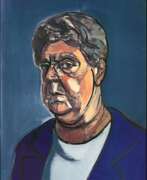

Leland Bell, an American painter born in 1922 and passed away in 1991, is a figure whose artistic journey and output stand as a beacon of individuality and depth in the 20th-century art world. Bell's dedication to painting was profound, shaping a career that remained largely self-taught yet significantly influential. His work, characterized by a passionate engagement with both abstract and figurative painting, represents a unique blend that defied the dominant trends of his time, making him a crucial figure for collectors and art enthusiasts.
Bell's artistic signature is evident in his choice of subjects—still life, portraiture, and figure composition—handled with a distinctive blend of abstract principles and figurative clarity. His paintings are recognized for their bold contour lines, vibrant planes of color, and dynamic compositions, revealing a singular vision that bridges the abstract with the tangible. This approach allowed him to explore the depth of human and thematic elements with an intensity and psychological complexity, particularly seen in his self-portraits and family group scenes, which often carry a mythic quality, elevating everyday existence to the level of allegory.
Significant in Bell’s legacy is his ability to convey the essence of his subjects with a sculptural weight, granting them a presence that is both immediate and timeless. His paintings, such as the "Family Group with Butterfly" (1986-90) and his series of self-portraits, demonstrate a mastery of form and space that invites viewers into a deeply personal yet universally resonant world. Bell's influence extended beyond his canvas through his roles as a teacher and lecturer, where he passionately advocated for the artists he revered, contributing to a rich educational legacy that complemented his artistic achievements.
Bell's works are held in prestigious collections and have been the subject of retrospective exhibitions, such as at the Phillips Collection in Washington, DC, highlighting his enduring impact on American art. His dedication to exploring the nuances of form, color, and composition has left a lasting mark, ensuring his place among the notable artists of his generation.
For collectors and experts in the field of art and antiques, Leland Bell's oeuvre offers a compelling study in the power of painting to convey complex human emotions and narratives. His work remains a testament to the enduring relevance of figurative art in the modern era, and his contributions continue to inspire new generations of artists and collectors alike.
To stay informed about new discoveries, sales, and auction events related to Leland Bell's work, signing up for updates is a practical way to ensure you don't miss out on opportunities to engage with the legacy of this remarkable artist. This subscription is a business-like avenue to keep abreast of events that celebrate Bell’s artistic achievements and offer insights into his profound impact on the art world.
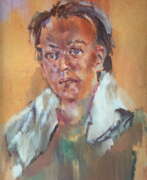

Christian Bérard, also known as Bebè, was a French artist, fashion illustrator and designer.
Bérard and his lover Boris Kochno, who worked for the Ballets Russes and was also co-founder of the Ballets des Champs-Elysées, were one of the most prominent openly homosexual couples in French theater during the 1930s and 1940s.


Igor Borisovich Berezovsky was a Soviet and Russian artist, graphic artist and designer.
Igor Berezovsky was interested in the texture of television images; he reproduced magazine photographs and brought them to the brink of extinction with the help of large screen prints; he introduced unexpected textures into images using all kinds of "rubbish"; he paraphrased Folon and Dibbets, Warhol and Dürer.
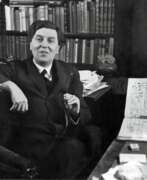

Alban Berg, full name Alban Maria Johannes Berg, was an Austrian composer, representative of expressionism in music, teacher and music critic.
A meeting with composer Arnold Schoenberg (1874-1951) in September 1904 played a decisive role in Berg's life. The latter saw talent in the young man and taught him free of charge for six years. In 1907 Berg performed his "Sonata for Piano" for the first time.
Alban Berg was very self-critical and worked on pieces for a long time. He composed orchestral music (including "Five Orchestral Songs," 1912), chamber music, songs, and two groundbreaking operas, "Wozzeck" (1925) and "Lulu" (1937). "Wozzeck," the most frequently performed theater work in the atonal idiom, is Berg's first attempt to address social issues within the framework of opera. However, its premiere turned into a scandal, with critics even calling the composer a musical fraud.
Only a few years after his death, Alban Berg was widely recognized as a composer of expression. He broke with tradition and mastered a radical technique, but at the same time he combined the old and the new and created, together with Schoenberg and Webern, the New Viennese School of the 20th century. Alban Berg was also an outstanding teacher of composition.
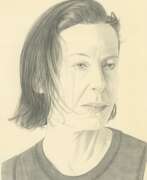

Ellen Berkenblit is an American painter. She was born in Paterson, New Jersey and graduated from the Cooper Union in 1980. She received an Arts and Letters grant from the American Academy of Arts and Letters in 2013, and a Guggenheim Fellowship in the following year. She has exhibited at the Anton Kern Gallery. The Brooklyn Museum holds examples of her work.
Often working in large-scale and in oil paint, a recurring motif in Berkenblit’s work is a magical female protagonist, frequently depicted as a cartoonish women in profile, with long lashes, rosy cheeks, and wild hair.
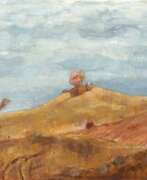

Siegfried Berndt, born 1880 in Germany and passing away in 1946, was a distinguished painter and printmaker whose artistic contributions are often overlooked in art history. After studying at the Dresden Art Academy, Berndt received a travel scholarship that profoundly influenced his art, taking him to cities like Paris, Brussels, Antwerp, London, and Scotland. These travels exposed him to diverse artistic movements, enriching his work with elements of Impressionism, Expressionism, and New Objectivity.
Berndt was especially skilled in the traditional Japanese woodblock printmaking technique, which he employed to explore various artistic styles. This unique approach resulted in color woodcuts with a distinct personality, appealing to a wide range of collectors. His woodblock prints are particularly noted for their innovative use of this traditional technique, blending it with Western artistic movements.
Despite the challenges posed by the two World Wars, Berndt's work found its way into public collections and was recognized for its artistic merit. However, much of his pictorial work was lost due to the turmoil of war. Some of his expressive pastel works, often repeated with small variations, as well as oil paintings, have been documented.
Berndt's art remains relevant for collectors, auctioneers, and experts in art and antiques, particularly for those interested in the intersection of Eastern and Western printmaking techniques. His work, although not as widely known, represents a unique blend of styles and techniques that contribute to the rich tapestry of early 20th-century art.
For enthusiasts interested in staying updated about sales and auction events related to Siegfried Berndt's work, subscribing to updates would be beneficial. This ensures access to the latest information about new sales and auction events related to his art.


Katherine Bernhardt is an artist based in St. Louis, Missouri.
Bernhardt is known for painting consumer symbols, tropical animals, and every day objects over bright flat fields of color in an expressionistic and almost abstract style.
Bernhardt has also been involved in numerous collaborations within the art and fashion industries. She has also collaborated with Flaunt magazine, EDUN, and Miss Sixty.


Virginia Berresford is an American artist and printmaker.
Virginia Berresford studied with George Bridgman at the Art Students' League and in Paris with Amedee Ozenfan from 1925 to 1930. Berresford was known for her landscape paintings with strong composition and use of colour as well as attention to detail.
In the 1950s she opened an art gallery in Edgartown, Martha's Vineyard. Her work is included in the permanent collections of the Whitney Museum of American Art, the Detroit Art Institute and the Dallas Museum of Art.
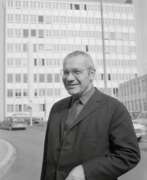

Max Bill, a Swiss artist, architect, painter, typeface designer, industrial designer, and graphic designer, emerged as a key figure in 20th-century art and design. Born in Winterthur, Switzerland, in 1908, Bill's education at the Bauhaus under luminaries like Wassily Kandinsky, Paul Klee, and Oskar Schlemmer profoundly influenced his multidisciplinary approach. His work spans from graphic design, where he was instrumental in shaping Swiss design from the 1950s, to product design with iconic creations like the Ulmer Hocker, a versatile stool designed in 1954.
Bill's contributions to concrete art and his role in founding the Ulm School of Design alongside Inge Aicher-Scholl and Otl Aicher in 1953, mark him as a pioneer who blurred the lines between art, design, and architecture. His theoretical writings and teaching at the Ulm School further underscored his commitment to integrating art with science, shaping a generation of designers and artists.
Noteworthy among his architectural works are his own house and studio built in Zurich-Höngg in the early 1930s and a series of public sculptures that challenge perceptions and engage public spaces in innovative ways. His legacy also includes influential roles in politics, contributions to the field of education, and the establishment of foundations to preserve his work and ideals.
Bill's extensive oeuvre, which also includes timepieces designed for Junghans and a multitude of sculptures, demonstrates his belief in the unity of form and function and the possibility of art to embody the principles of the new physics of the 20th century. His works are not only held in high regard for their aesthetic and functional qualities but also for their ability to convey complex theoretical ideas in tangible forms.
For collectors and experts in art and antiques, Max Bill remains a figure of immense importance, whose works continue to inspire and influence contemporary design and art practices. Sign up for updates related to Max Bill to stay informed about new product sales and auction events showcasing his remarkable contributions to modern art and design.
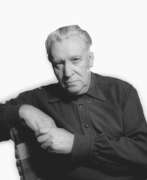

Edmond Bille was a Swiss artist. Bille engaged in intense and varied activity as painter, engraver, stained glass artist, journalist, writer, and politician. He is the creator of the stained glass windows around the altar of the Cathedral of Lausanne, capital of the Swiss canton of Vaud.
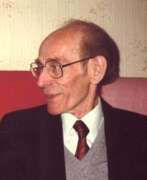

Boris Georgievich Birger (Russian: Борис Георгиевич Биргер) was a Soviet artist of the second half of the twentieth century of Jewish origin. He is known as a portrait painter, a representative of "unofficial art", a follower of symbolism.
Boris Birger developed his individual style of portrait painting, recognizable by his colorism. He often portrayed representatives of the liberal creative intelligentsia and was twice expelled from the Union of Artists of the USSR because of his criticism of official cultural policy.
In the 1970s his work was recognized abroad, especially in Germany, and from 1990 he lived in that country.
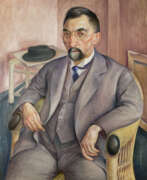

Albert Birkle was a German and Austrian painter, decorator, muralist and glass painter.
Albert's father was the artist Karl Birkle, from whom he received his initial training as a decorative painter, then studied at the Hochschule für die bildenden Künste (now the Berlin University of the Arts). Birkle developed a unique style based on Expressionism and the New Objectivity/Neue Sachlichkeit style. His subjects were lonely, mystical landscapes, typical scenes of Berlin in the 20s and 30s, portraits and religious scenes.
In 1932, fleeing the National Socialists, Albert Birkle moved to Salzburg, Austria, but nevertheless represented Germany at the Venice Biennale as early as 1936. In 1937, his work was declared "degenerate" in Germany and withdrawn from state collections. In 1946, Birkle was granted Austrian citizenship and began working on religious frescoes and decorative windows for various churches and oil paintings. The 1950s and 60s were filled with intense creativity in glass painting.
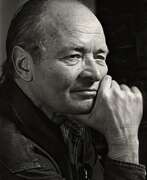

Elmer Nelson Bischoff was a visual artist in the San Francisco Bay Area. Bischoff, along with Richard Diebenkorn and David Park, was part of the post-World War II generation of artists who started as abstract painters and found their way back to figurative art.
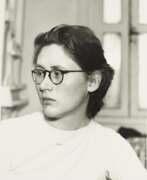

Nell Blair Walden Blaine was an American landscape painter, expressionist, and watercolorist. From Richmond, Virginia, she had most of her career based in New York City and Gloucester, Massachusetts.
Blaine resisted classifying her work, which explored color and the interplay of light and shade. The subject matter was primarily landscapes of the Hudson River made from her apartment window, vases of flowers, still lifes, home interiors, or her garden at Gloucester, Massachusetts. She once said, "The artist needs a permissive atmosphere. I am not involved in impressionism, and I have turned from my former total abstract presentation. Mine are action paintings. I want to be surprised by what I am doing. An artist must be his own leader, no matter what direction he takes."
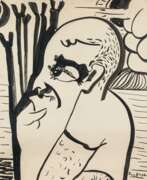

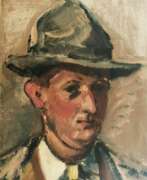

Ludwig Bock was a German painter and graphic artist, draughtsman, and illustrator.
He studied painting at the Munich Academy and was a member of the Munich Secession. Bock's work was influenced by Matisse and Cézanne, as well as by the artists of the Scholl circle. His watercolors, painted mainly in Paris and inspired by the Impressionists who lived there, depict landscapes, folk and fair scenes, and nude scenes.
